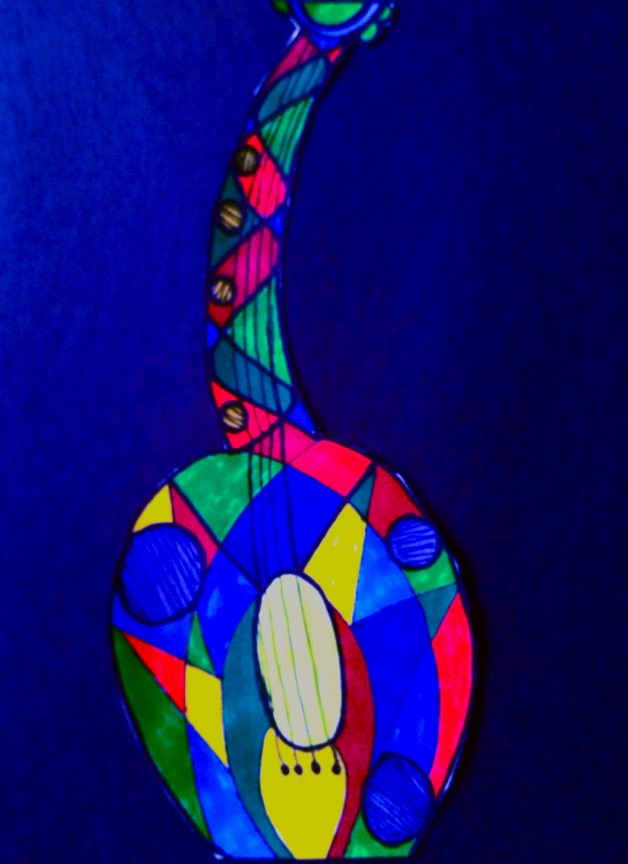Re-entry is always a challenge. I have my comments back from my agent. There are six things she wants me to address (add, edit, massage). Six–and then we take the book out on the open market . . . This is exciting and nerve-wracking. I sat down on Monday to begin to address these things. I copied them from her email into a list. I printed out my manuscript. I went to sit in a cafe and work.
How to begin? I had been thinking that I would read through the entire manuscript, but I found on Monday that I didn’t have enough distance. I really like the opening, and so I had read it a few times in the interim, while waiting for my agent’s comments. And it hadn’t been so long since I’d last read closely through the whole thing, making changes as I went. On Monday, I was not ready to begin to read it.
I decided to work on trimming the section she felt dragged a bit. It’s a long digression, I suppose. I think it answers some key questions about my premise–especially if you happen to be a Kafka expert. But let’s face it, when that Kafka expert job gets posted, how many people apply? Still, part of my vision for this book has been that I will stick as close to the truth as I am able, aside from my one BIG change . . . So: it’s a digression I hold near and dear. It’s some old material I thought I had cleverly worked back into a largely new manuscript. You know the deal–admit it. Who doesn’t want to sneak some favored fragment in somewhere. So much is lost in the process of writing a book.
Of course–it isn’t lost-lost. It’s in there–or out of there–making what’s left that much stronger and richer. It’s all about letting go . . .
Yesterday, I met with a private coaching client. That word came up: efficiency. I told her, everyone wants to write more efficiently. Published authors come to me and say, It took me X years to write this book, and I want to write the next one much more efficiently. X – 2 or X – 5, they say.
That’s like wanting to fingerprint more efficiently, I told my client. What would you do? Use a brush? A grid? The whole point is to get messy, enjoy the colors and the texture of the paint and the freedom of motion.
As it happens, I am sorting through large amounts of my children’s art this week. Large amounts. I recognize that the person who stored all this art was exhausted, tapped out, incapable of making a decision like: should I recycle this or frame it? Incapable of adding “frame this painting” to her list. Not a lazy person, but one taxed beyond her measure, whose extra energy beyond her two babies, when there was any extra energy, went to writing . . . I feel for her. I am delighted I am not exactly that person–any more . . .
I am someone who glories in the process. How fabulous that my children made so much art in their early years. Yes, I love the shapes and swaths, but much more important than the products (many of which are sun faded, permanently curled into tight scrolls or otherwise mishmashed) is the process. Here are the steps:
1) Provide paper and markers, crayons, paint. (Watch out for budding muralists.)
2) Praise action and notice shape, color, pattern. Express excitement about process rather than about talent or how “good” it is.
3) Hang some on the fridge. If you already got to take a shower this week and think there might be something you could pull out and call dinner in your cupboard, if you feel particularly ambitious, frame a few now and again. (I’m still planning to get there, once both kids are five.)
4) Recycle the rest. Offer them with thanks to the goddess of process, the guardians of the efficiency of finger painting. (Do this while your children are not present. If it takes you several years to get around to recycling, forgive yourself immediately.)
5) Get out more paper, sit down beside them with your own crayon. Get messy. Repeat as necessary, preferably for your whole life. May be translated wholesale to writing . . .
On Tuesday, distance had been achieved. I was able to begin to read through my manuscript, even to enjoy it. I didn’t make enormous headway–no zealous efficiency on Tuesday. But I made a beginning. And the beginning is the hardest part.
How can you apply the lessons of finger painting and recycling to your writing today?
Elizabeth Stark is the author of the novel Shy Girl (FSG, Seal Press) and co-director and co-writer of several short films, including FtF: Female to Femme and Little Mutinies (both distributed by Frameline). She earned an M.F.A. from Columbia University in Creative Writing. Currently the lead mentor and teacher at the Book Writing World, she’s taught writing and literature at UCSC, Pratt Institute, the Peralta Colleges, Hobart & William Smith Colleges and St. Mary’s College. She’s at work on a novel about Kafka.

